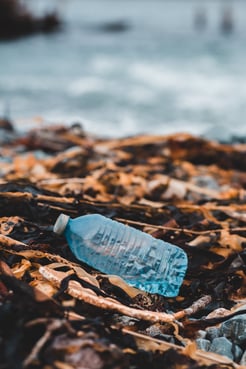Plastic is everywhere. We have adapted to use this sturdy, low-cost and dispensable material to aid us in many applications. This issue arises when we collectively compile a large amount of single use plastics in our landfills and oceans. There are many innovative solutions from people trailblazing the way to a sustainable future like The Rogerie a Kelowna company using 3D printing to harness the power of recycled plastics to create products, Radical Plastics, taking a radical solution to the chemistry of the plastic itself so that it may be less harmful when disposed of and Dr. Joanna Sadler and at the University of Edinburgh, taking plastics and using biochemistry to turn it into vanilla flavoring.
All these are examples of human ingenuity at its finest (and not to mention they were all guests on our Get Better At Garbage Podcast), but if we are to change our behavior, we should know what material we need to use and how to dispose of it. Plastic is highly reliable and useful, but you should also know which plastics harm our environment the most and which ones to avoid. Read below to view a guide of the different types of plastic and if they are usually recycled or considered waste.
 Polyethylene Terephthalate (PETE) or (PET)
Polyethylene Terephthalate (PETE) or (PET)
- The most common thermoplastic polymer used for food and drink packaging due to its ability to prevent oxygen to enter.
- PET plastic contains antimony trioxide, considered a carcinogen, and can cause cancer.
- Recommended for single use and disposal.
- High Density Polyethylene (HDPE) or (PE-HD)
- Relative to PET, this polymer is more stable and is a safer option and is commonly used as grocery bags, juice containers and shampoo bottles.
- These can be easily recycled and is typically downcycled to plastic lumber items in high demand.
- Caution is advised as some studies have shown HDPE to leech estrogen-mimicking additives.
- Polyvinyl Chloride (V) or (PVC)
- Used to create detergent bottles, medical tubing, and children’s toys; it is considered the second most used resin.
- It is considered the most toxic and most hazardous plastic which its use can lead to the leach of chemicals such as BPA (bisphenol A), phthalates, lead, dioxins, mercury, and cadmium.
- PVC plastic is the hardest to recycle due to is unique chemical characteristics.
- Low Density Polyethylene (LDPE) or (PE-LD)

- The cheapest and easiest to make, LDPE’s applications span grocery bags, plastics wraps, food packaging coatings, and wire or cable covering.
- It is considered safe for use; however, some caution is advised.
- This plastic is some of the most abundant and is very difficult to be recycled.
- Polypropylene (PP)
- Durable and resistant to heat applications include reusable water bottles, hot food containers, disposable diapers, and sanitary pad liners.
- A safe option for food and drink uses but most municipalities can recycle this plastic although a somewhat difficult process.
- Polystyrene (PS)
- Extremely hard to recycle it is recommended to avoid the use of this plastic.
- It is designed for insulation and cushioning almost all applications of its use ends up in the landfill.

- When exposed with heat and oil in food packaging, it may leach styrene which is considered a brand and nervous system toxicant as well as affects genes, lungs liver and immune system.
- Other Resins (OTHER) or (O)
- This code is used to identify a plastic if it doesn’t fall into the categories 1-6.
- Polycarbonate (PC) is the most common found in this category and isn’t use much due to its composition containing BPA (bisphenol A).
- Applications are baby bottles, sippy cups, water bottles, water gallon, metal food can liner, ketchup, and dental sealants.
- Along with its damaging health effects, it also has an extremely low recycle rate this should be avoided at all costs.
To summarize, although all plastics have various health side affects, we still use it in all forms of industry in the world. It remains one of the widest known reliable material and is still cheaper to produce. We hope this guide helps you make the right choices when using products that generate plastic waste as well as opting for a more sustainable option.
Remember to always check with your local municipality’s recycling requirements and please sort your waste to increase the probability of its landfill diversion.
Download our 7-Types of Plastics Infographic as your quick reference guide!

.png?width=371&height=500&name=Untitled%20design%20(12).png)
